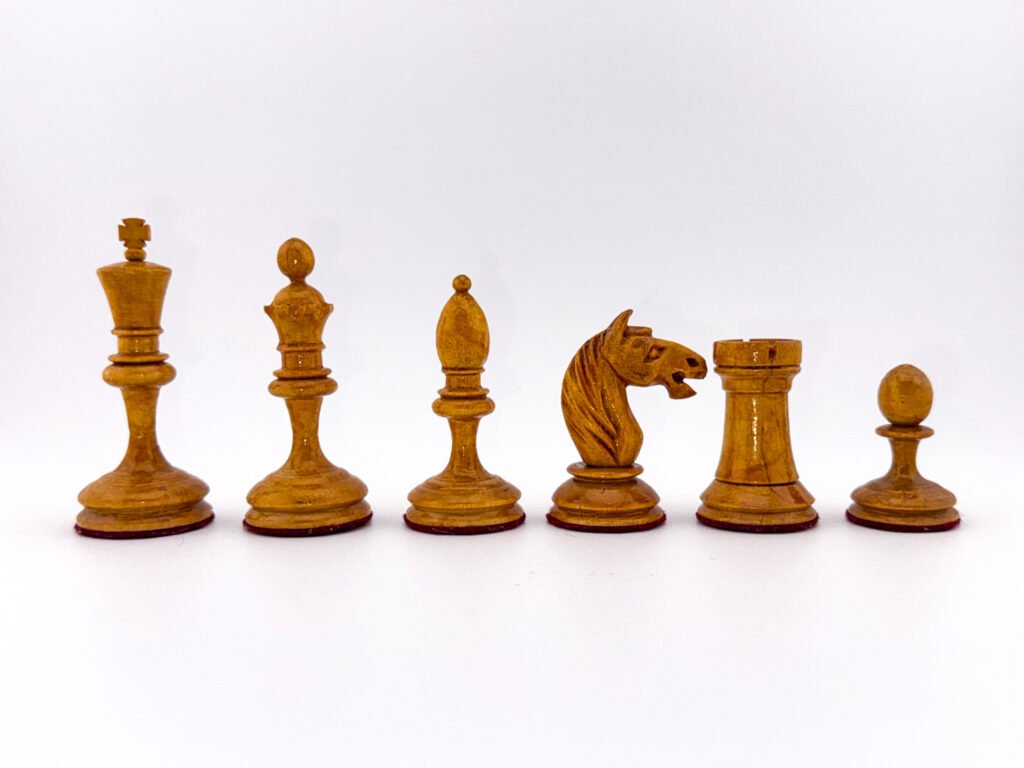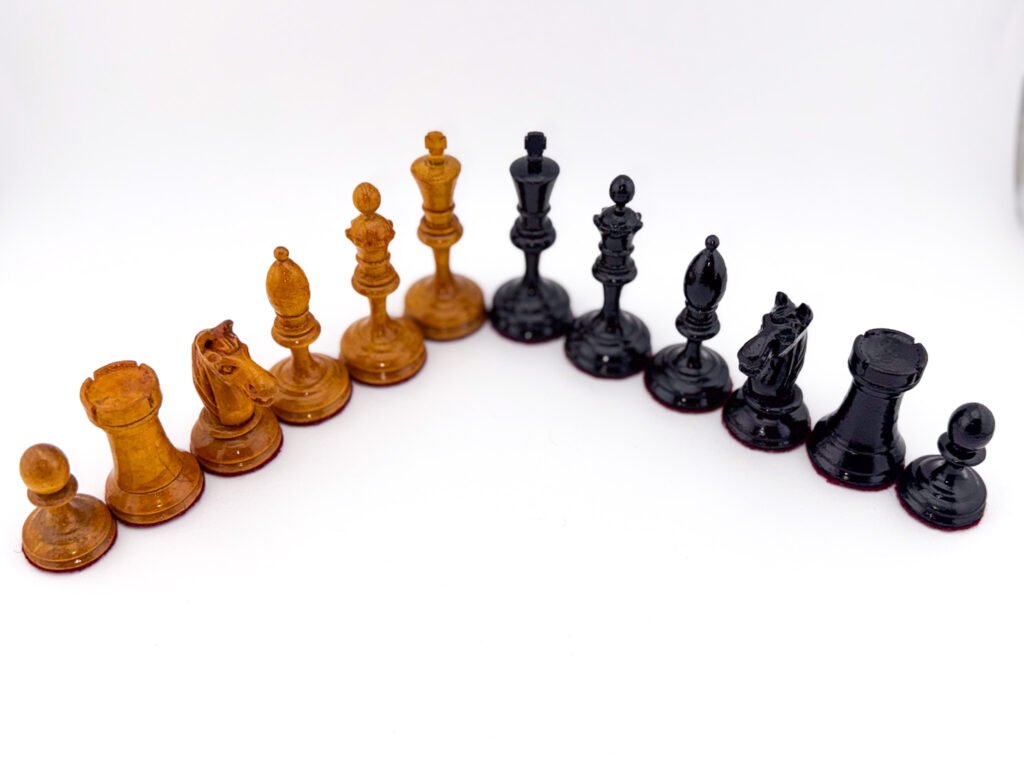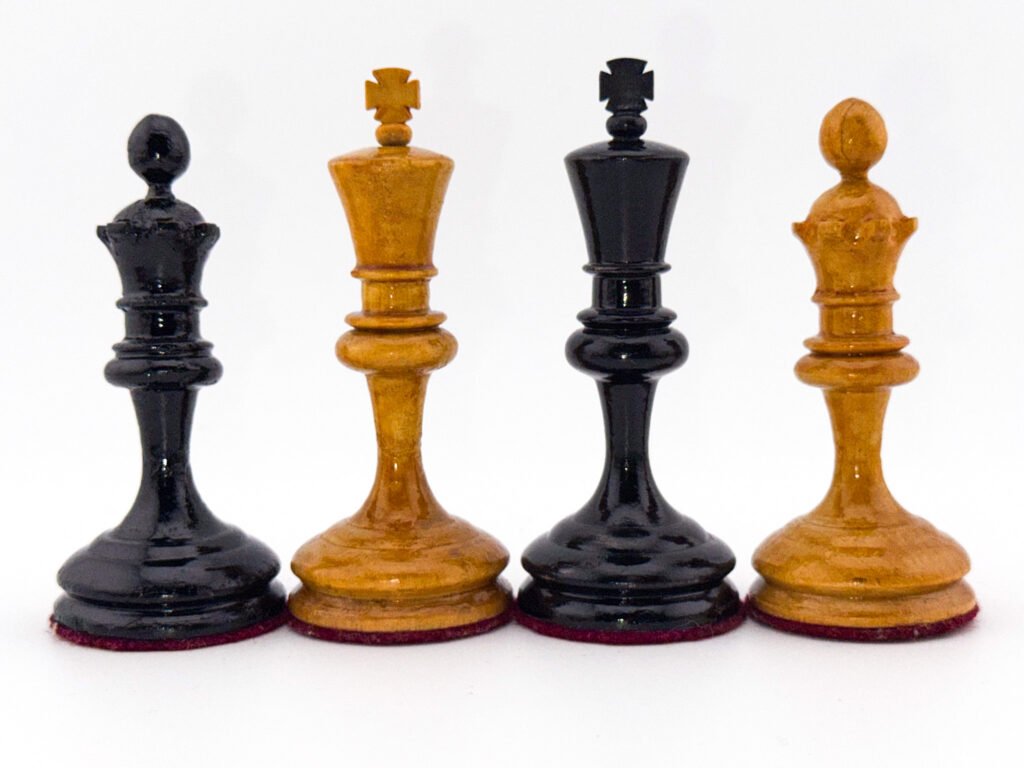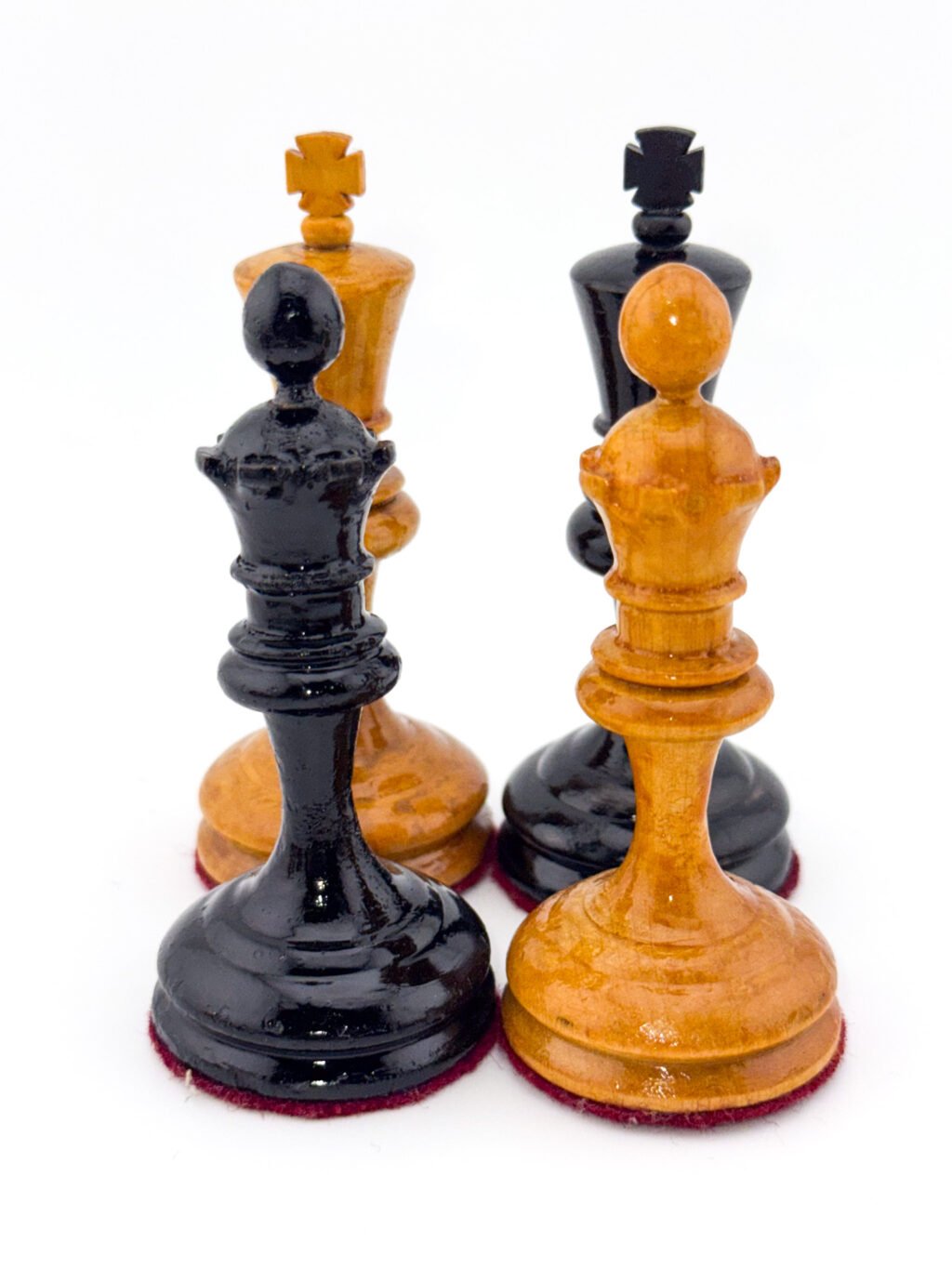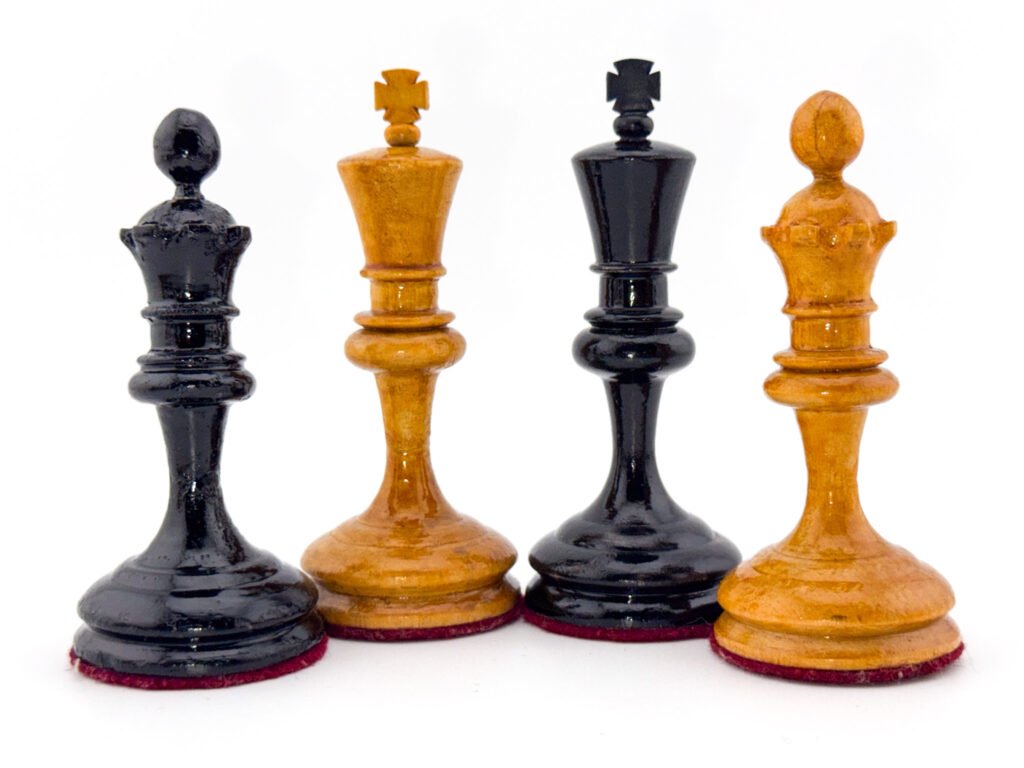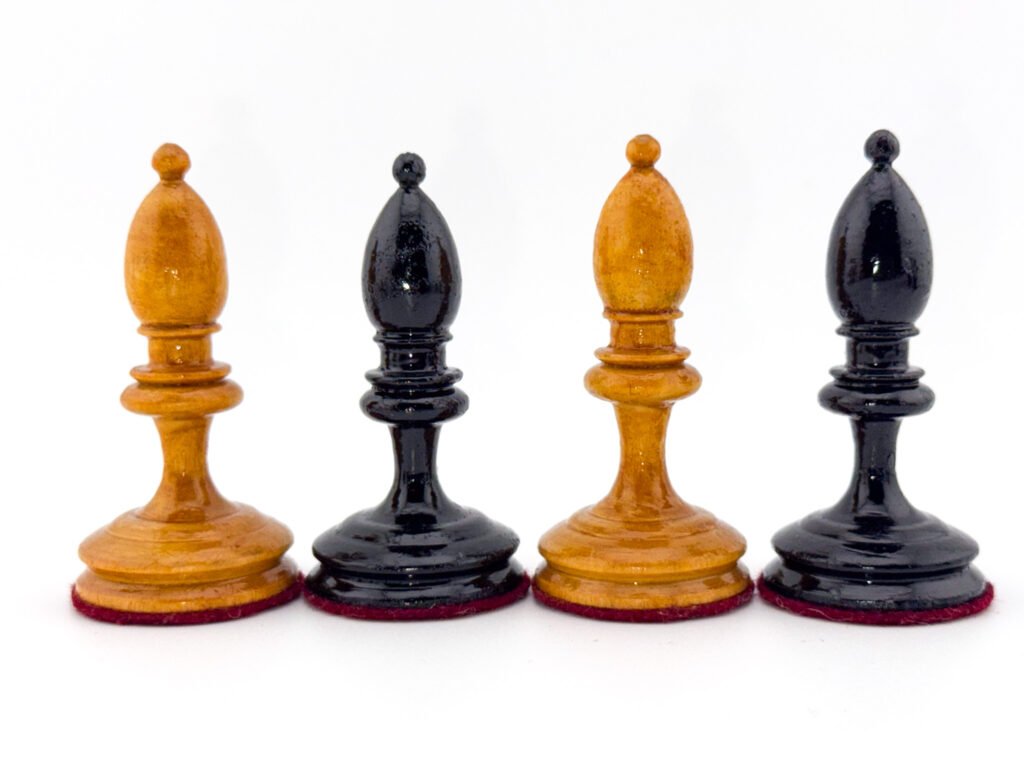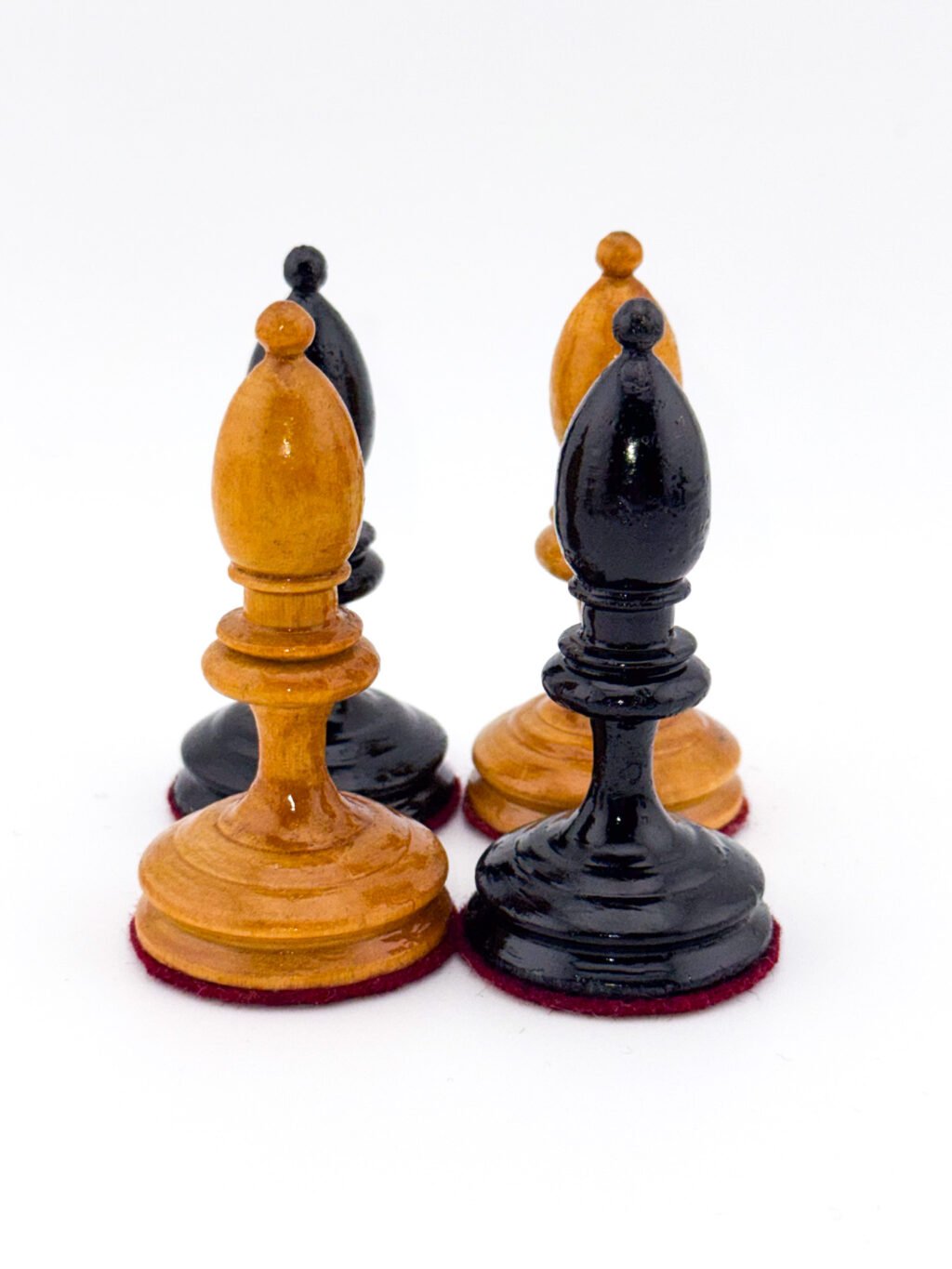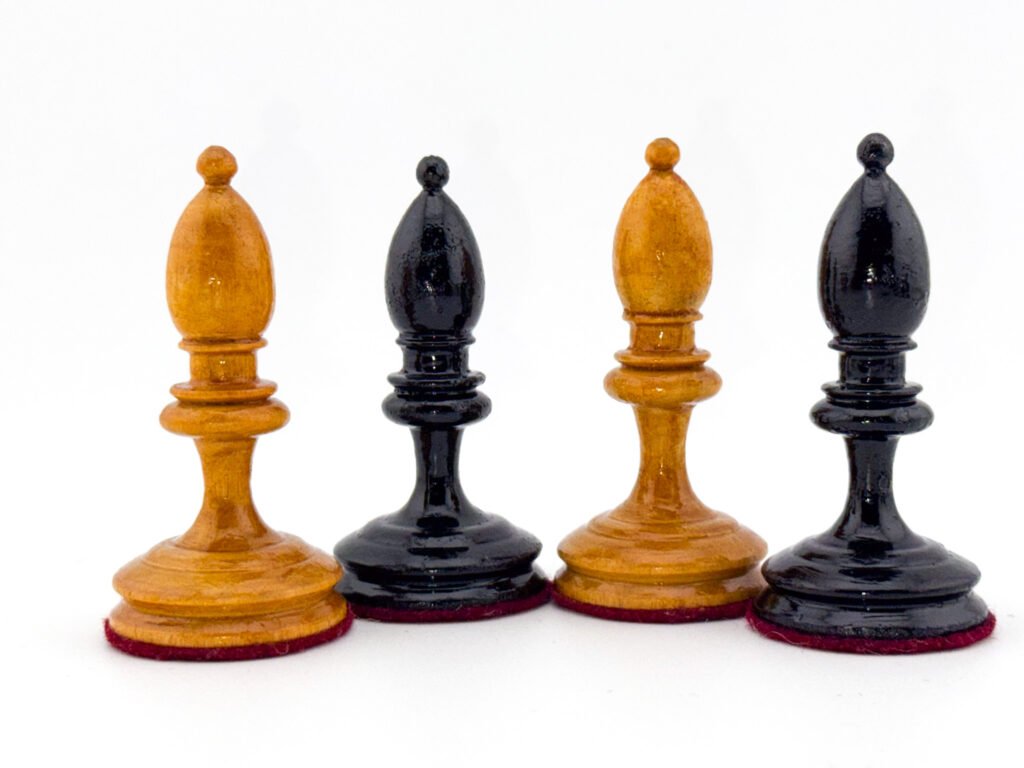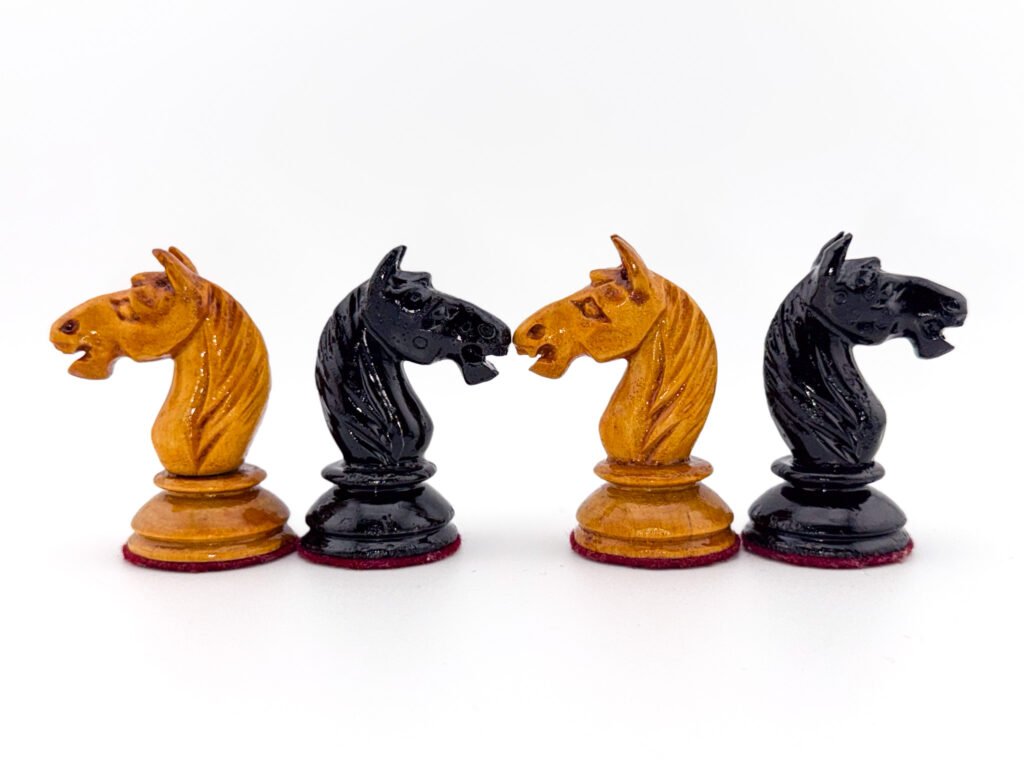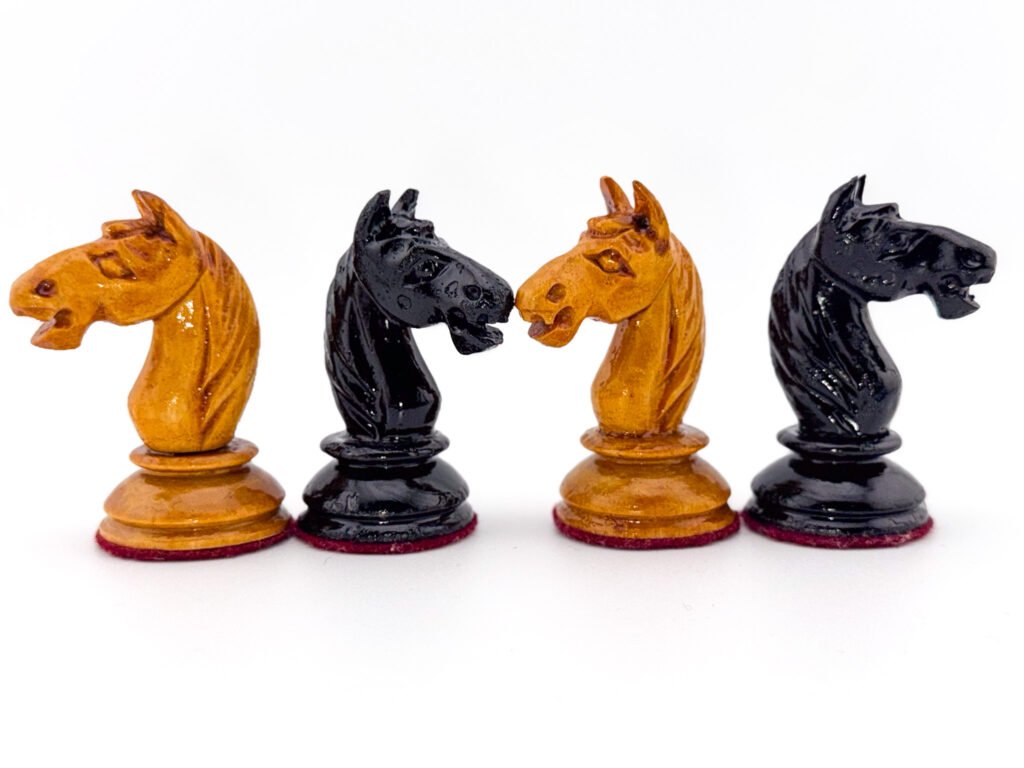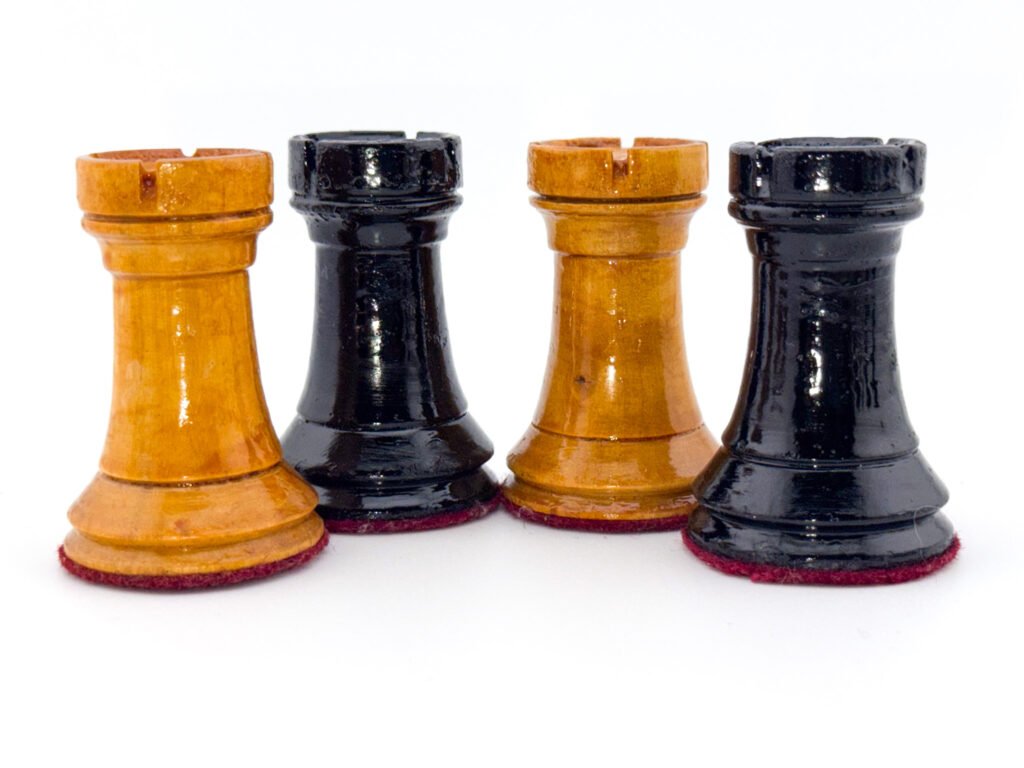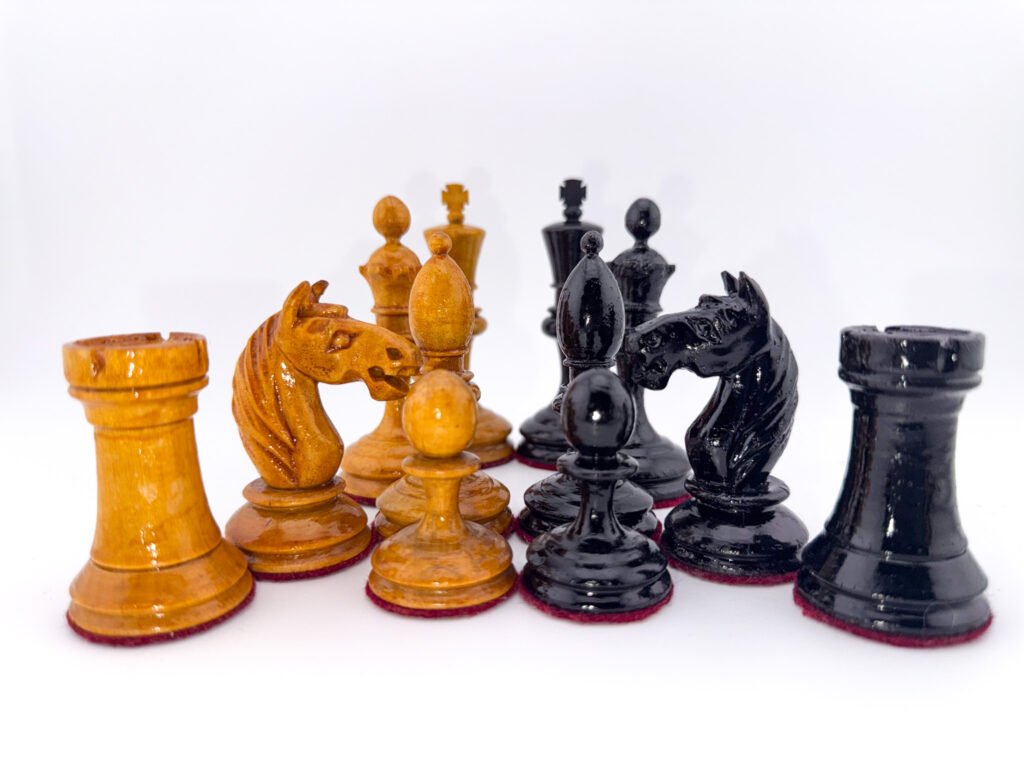The 1920-30’s Moscow International Lineage Chess set by “Unknown”.


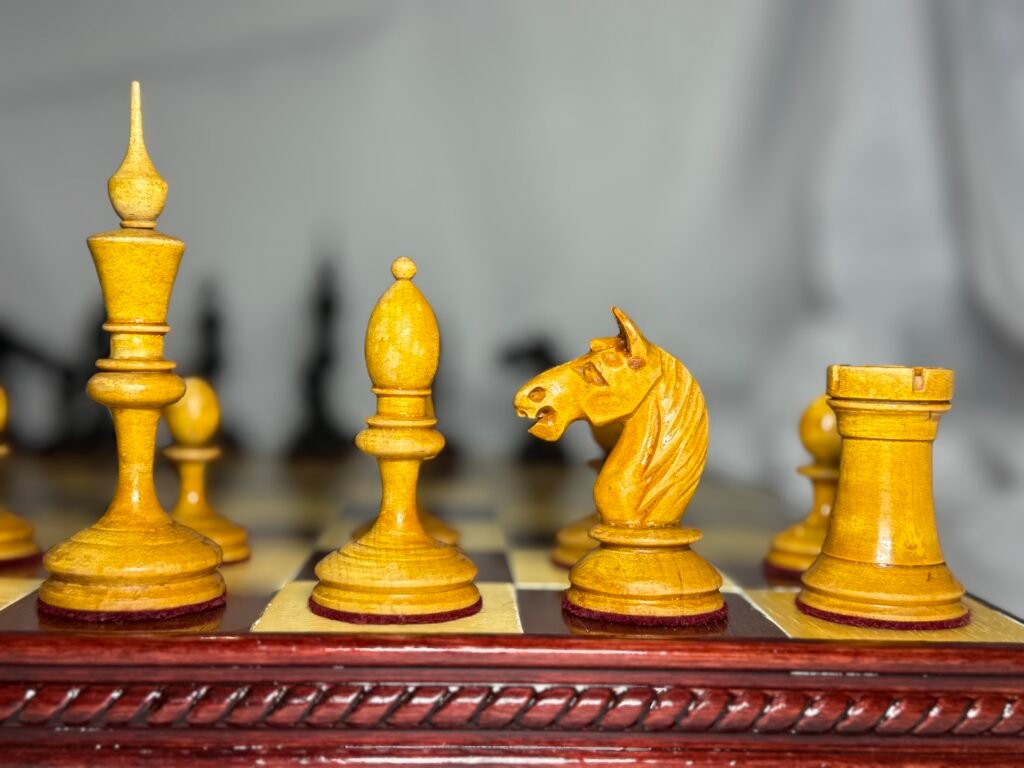
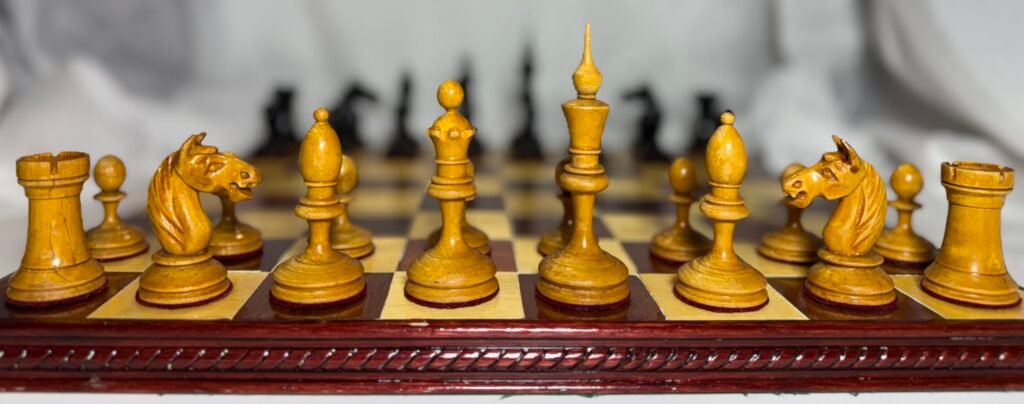
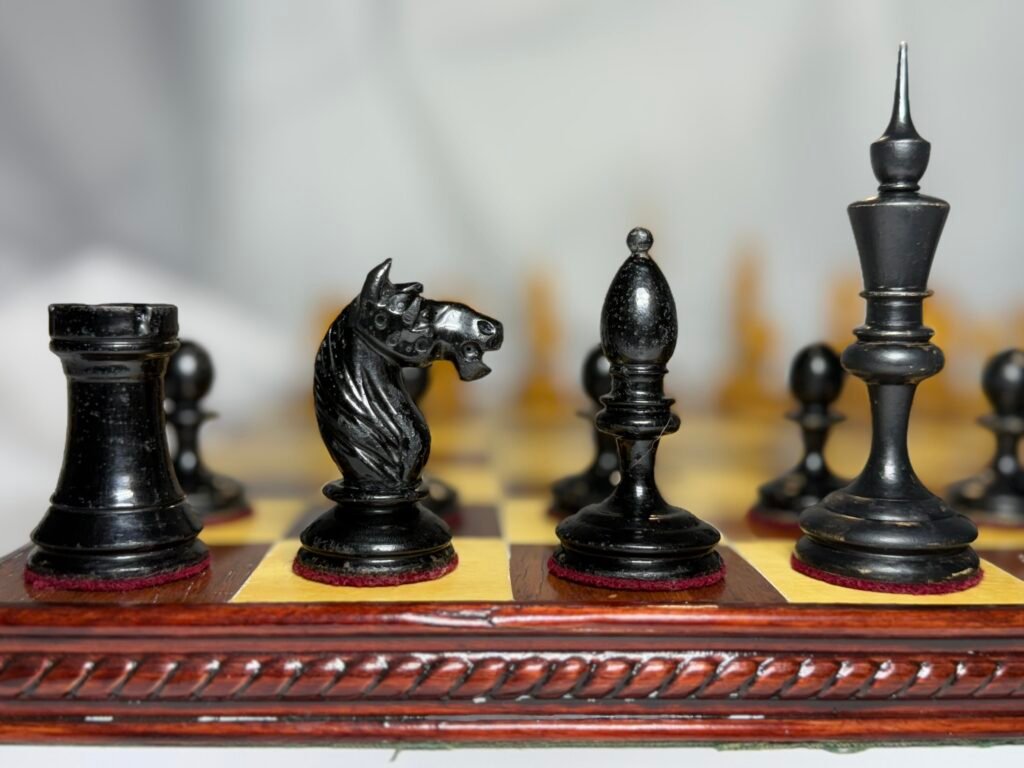

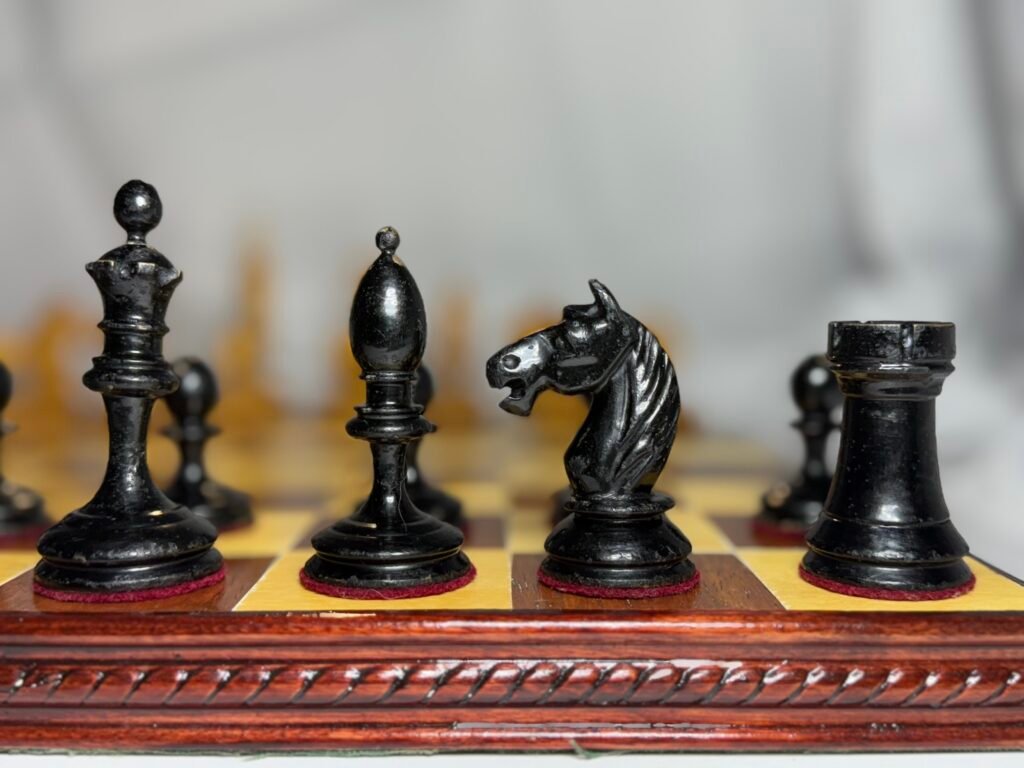
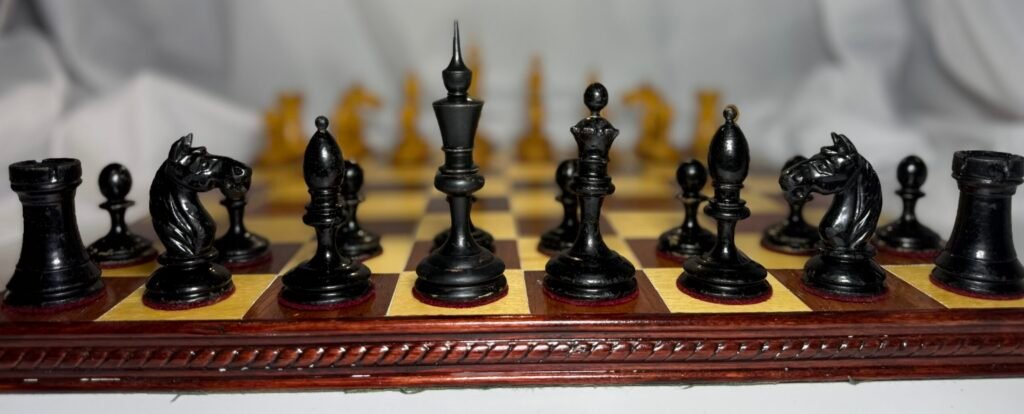
What they did…
I’m excited to share this fascinating chess set—acquired from Николай Филатов (“Nick”) of WorldChessSets (Etsy Shop)—which has sparked spirited debate among leading Soviet-era chess collectors. There’s ongoing discussion about whether this set belongs to the 1925 Moscow International lineage, the 1933 “Botvinnik-Flohr” family, or the “Smyslov” Chessmen tradition. Personally, I lean toward classifying it within the “Moscow International” lineage—potentially even as an earlier iteration than the well-known 1925 version—for several reasons.
One of the key distinguishing features lies in the stem design. Unlike the “Smyslov” sets, which feature a pronounced trumpeted stem, this set presents a “concave curve” more reminiscent of the 1925 Moscow International and “Voronezh” styles. The narrowest point of the stem sits at the middle in this set, whereas in “Smyslov” sets it’s at the base, and in the 1933 “Botvinnik-Flohr” sets, the upper part of the stems is considerably straighter. The bishop design further supports this distinction: while “Smyslov” bishops tend to have larger, flattened finials, the bishops in this set are more proportionate and rounded finials—aligning closely with both the 1925 and 1933 styles.

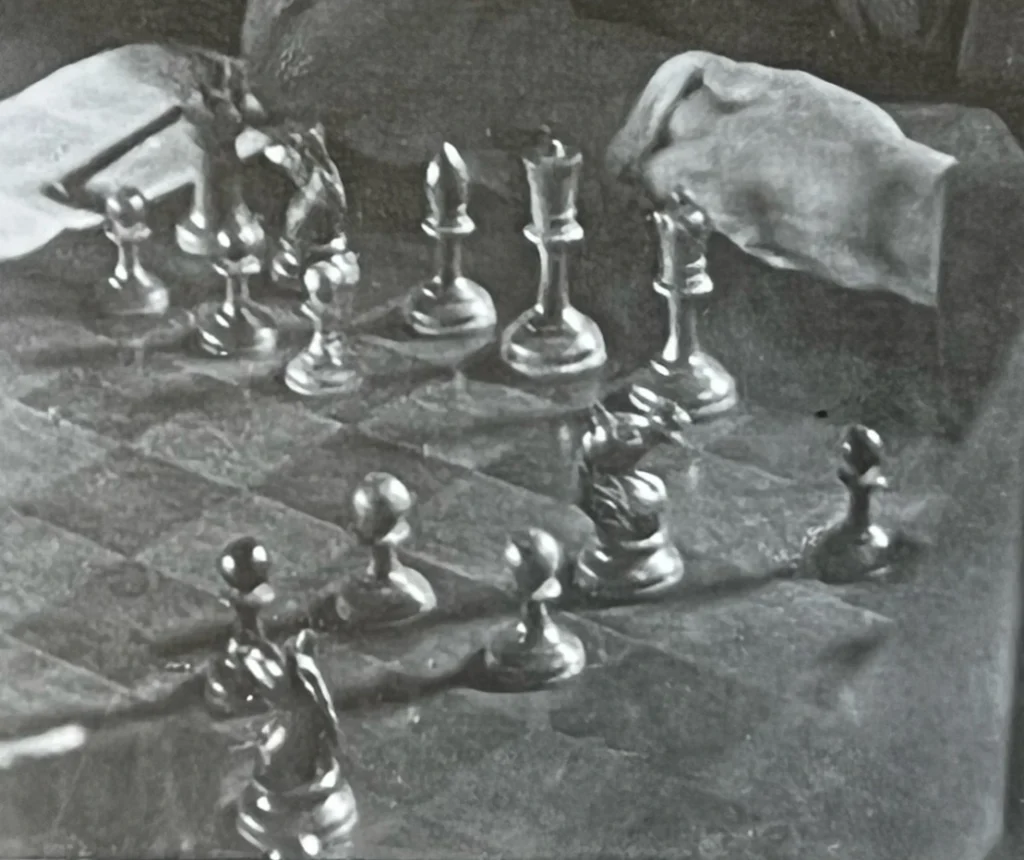

While it’s true that the 1925 “Moscow International”, 1933 “Botvinnik-Flohr”, and “Smyslov” sets share design similarities, the details I’ve outlined—particularly the stem and bishop profiles—suggest this set fits more comfortably with the earlier styles. I also believe there’s a strong case that this set may have been produced by the same artisan who crafted the late Dr. Antonio Fabiano’s specimen, as they share remarkable design and craftsmanship parallels.
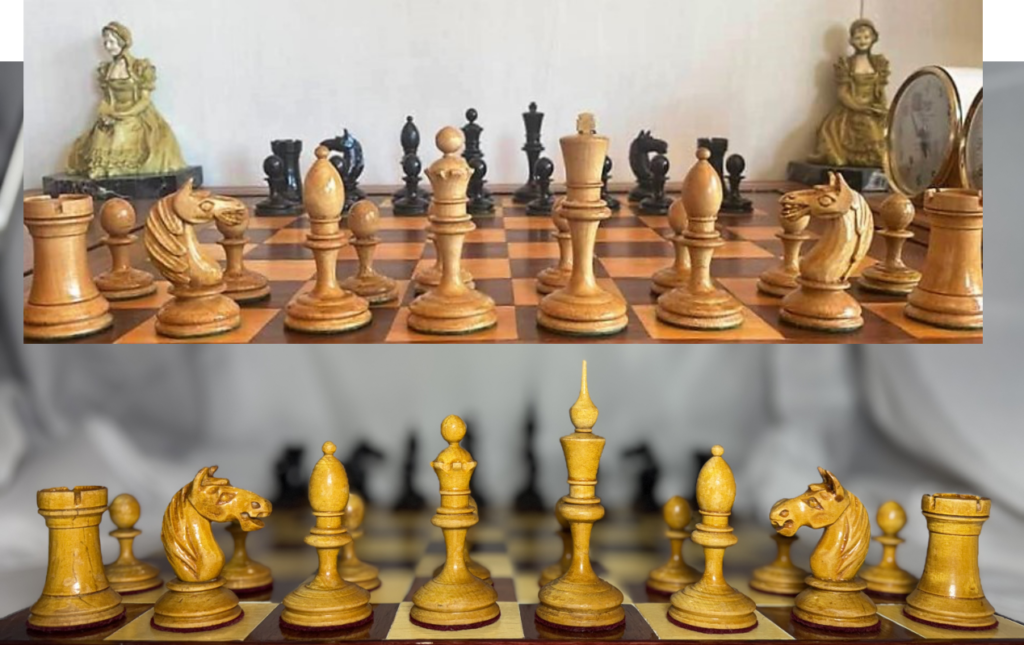
Interestingly, similar sets exist in the collections of Alexander Chelnokov, Steven Kong and Murat Dzhemakulov, though with some minor differences.



Based on these observations, I believe it’s reasonable to classify this as a 1920s–1930s “Moscow International” lineage chess set. That said, I fully welcome further insights, corrections, or debates regarding this set’s origins and classification. My intent is to document and present this set with as much historical accuracy as possible—not simply to validate a personal theory.
As with any collector’s journey, precision is the goal, but I recognize that errors can happen. If anyone has additional context or evidence to contribute, I sincerely invite you to share. Honest collaboration is essential in preserving the legacy of historically significant chess sets like this one.

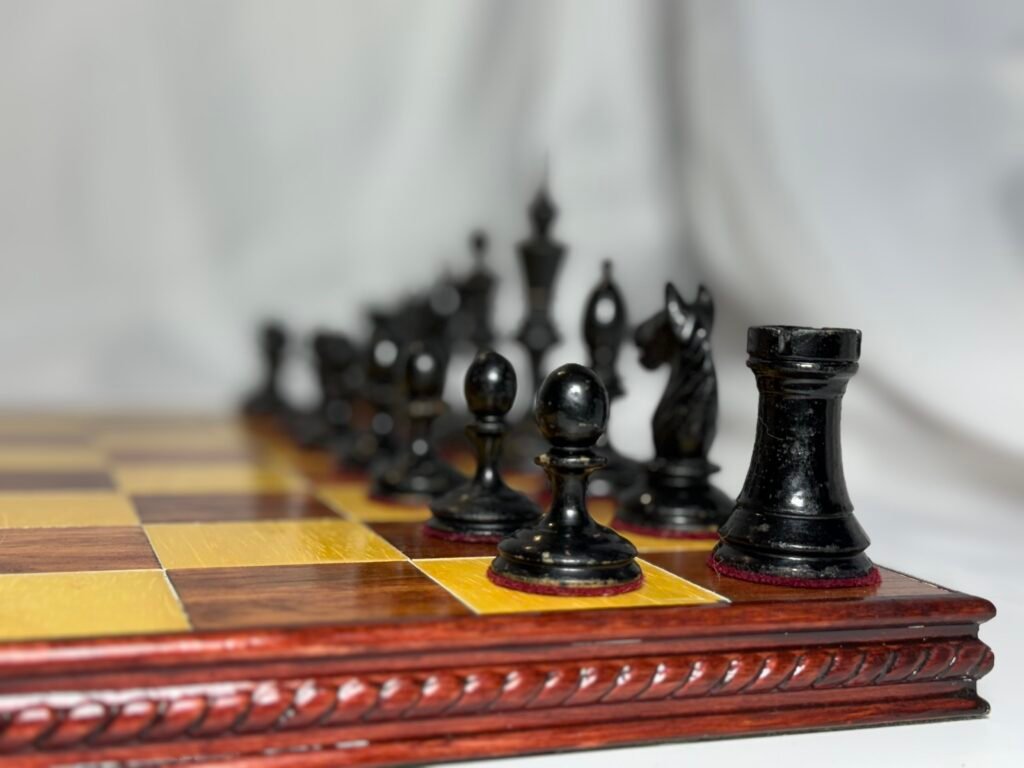
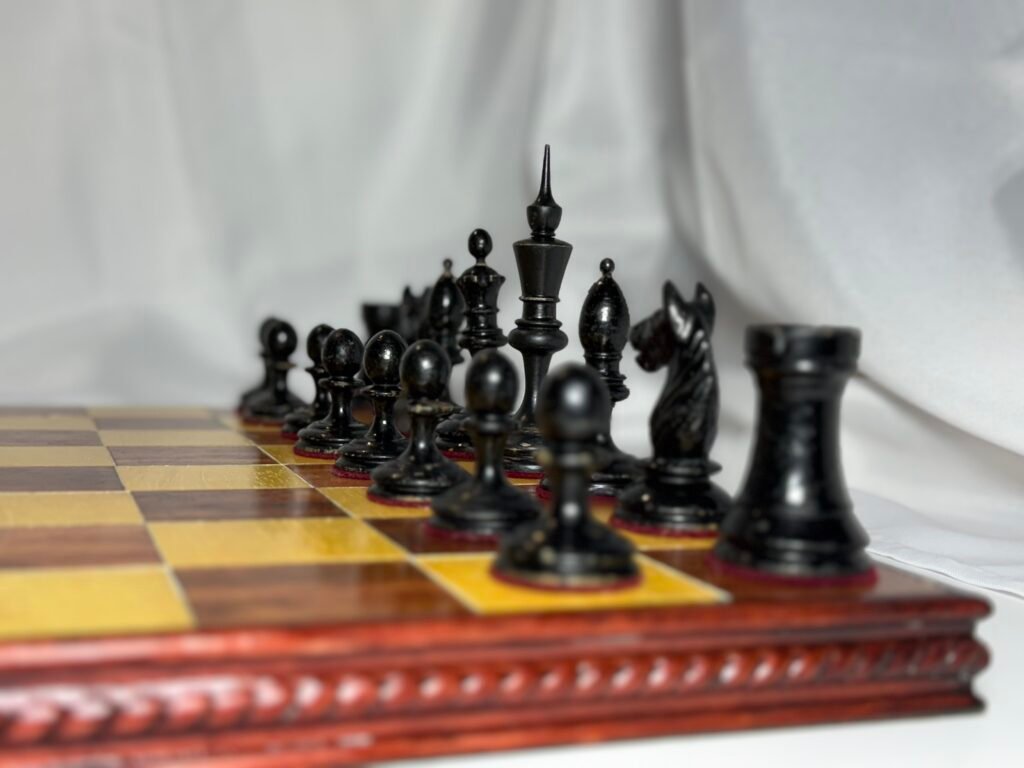


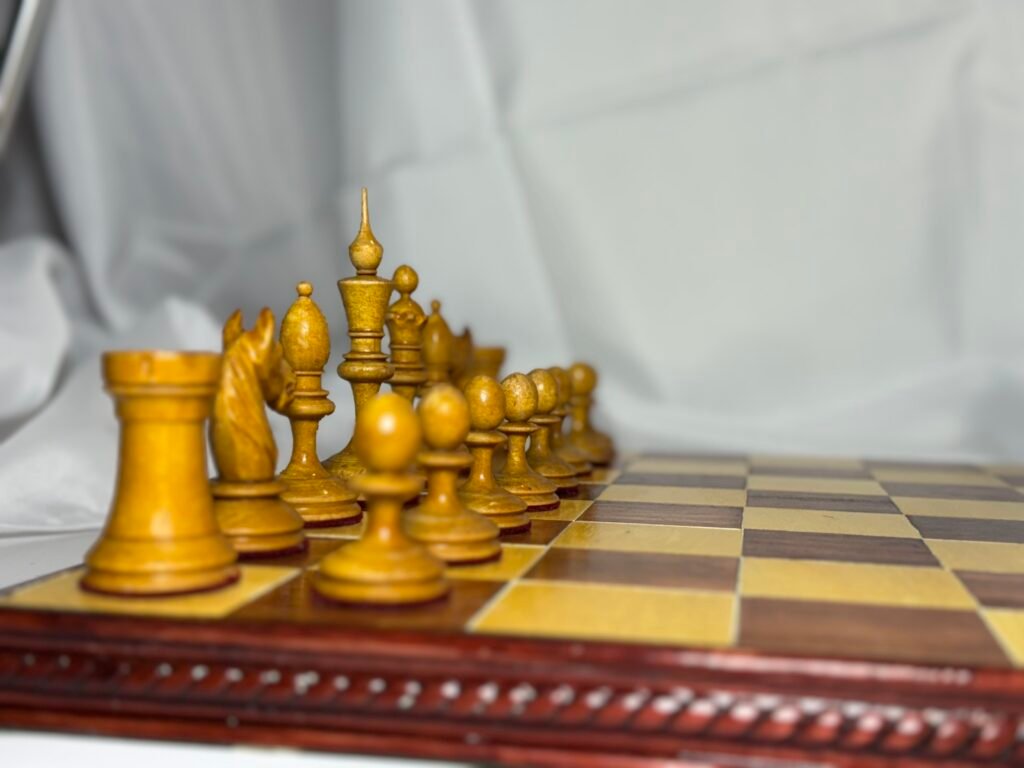
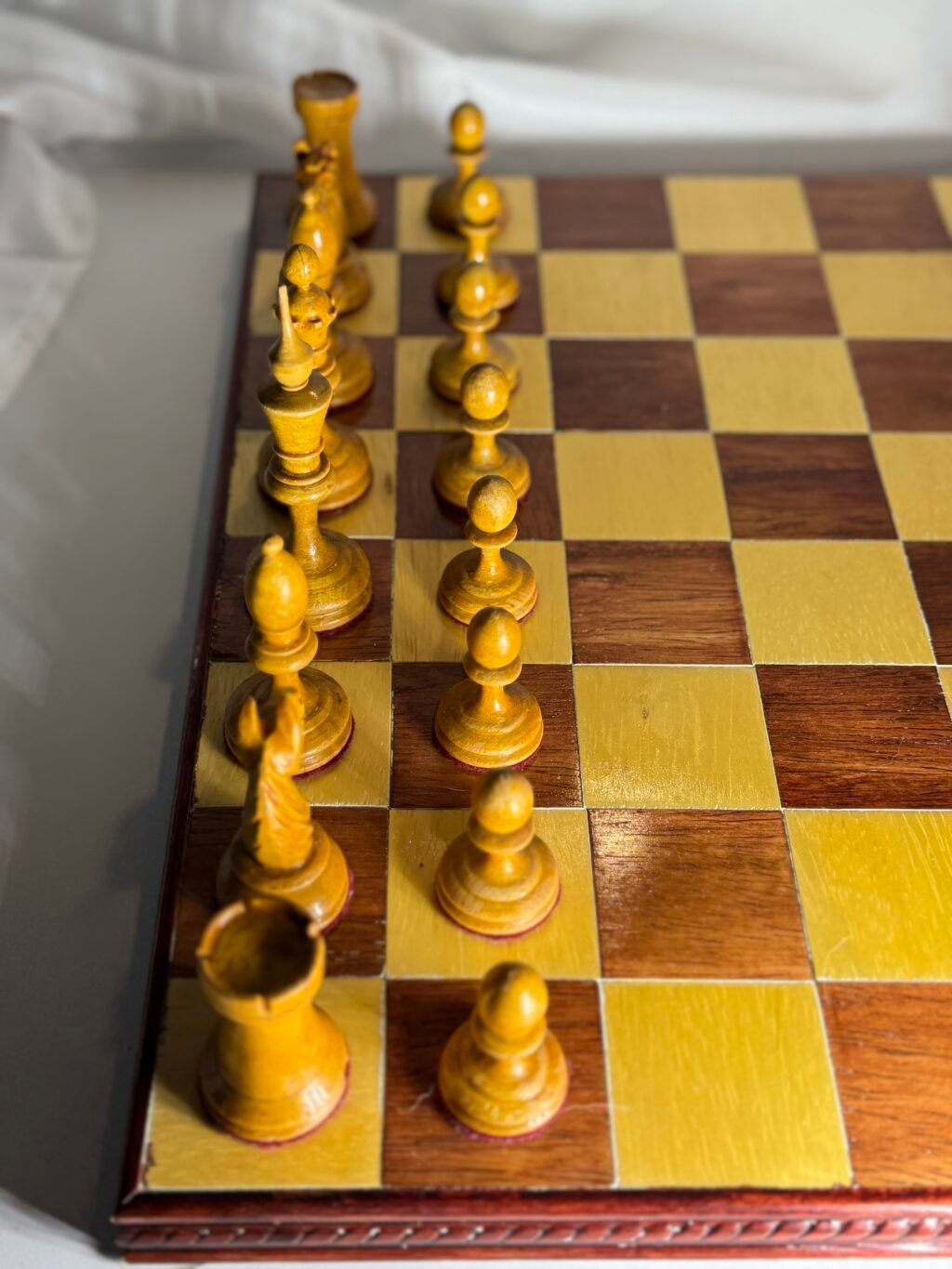
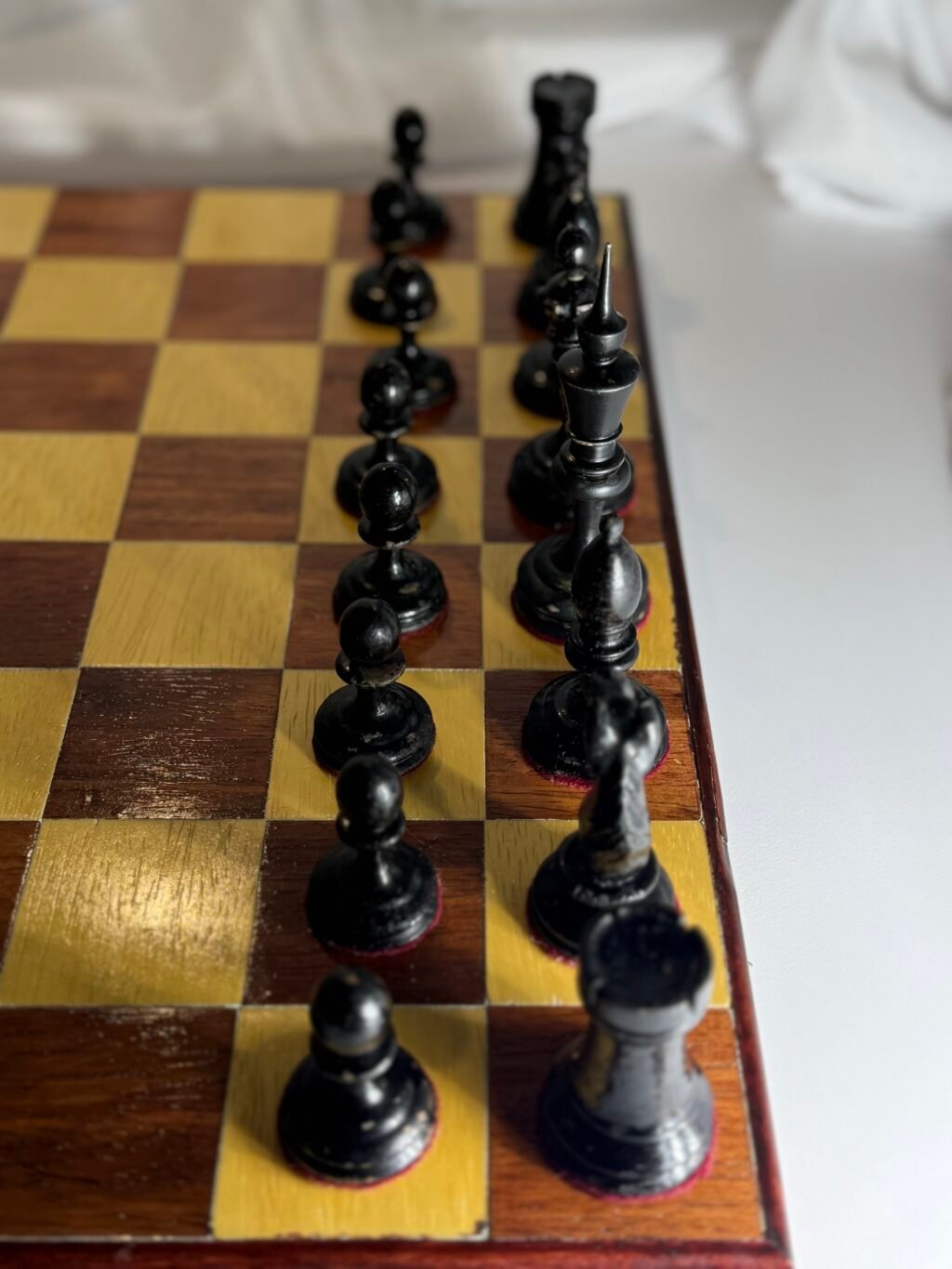

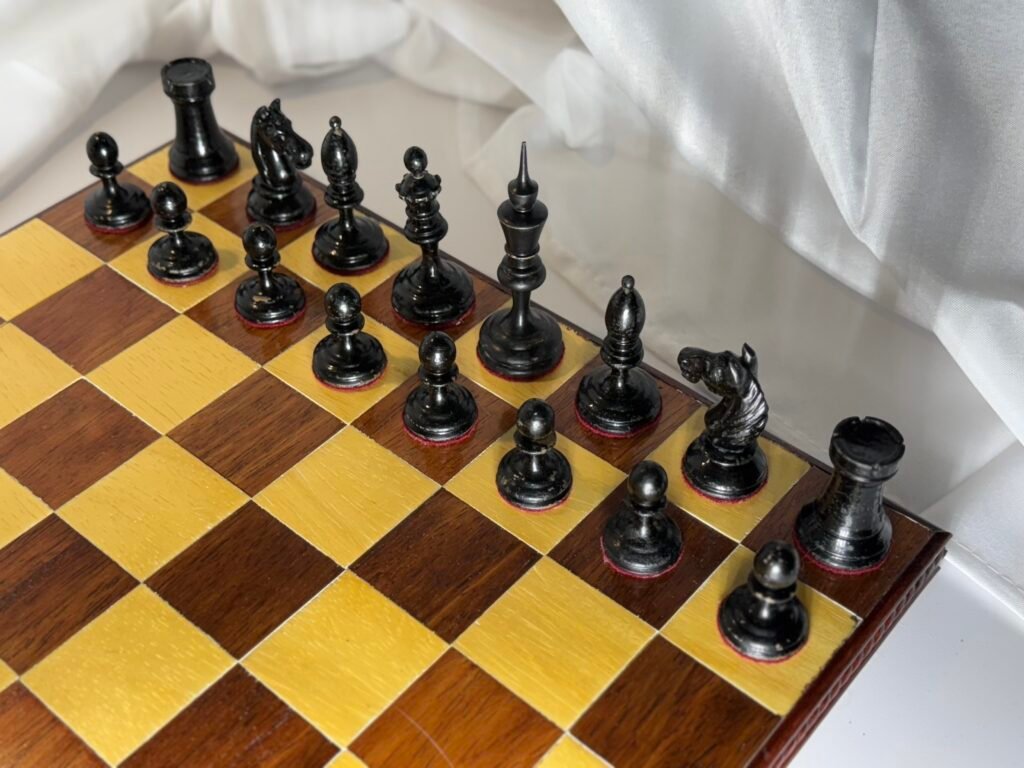
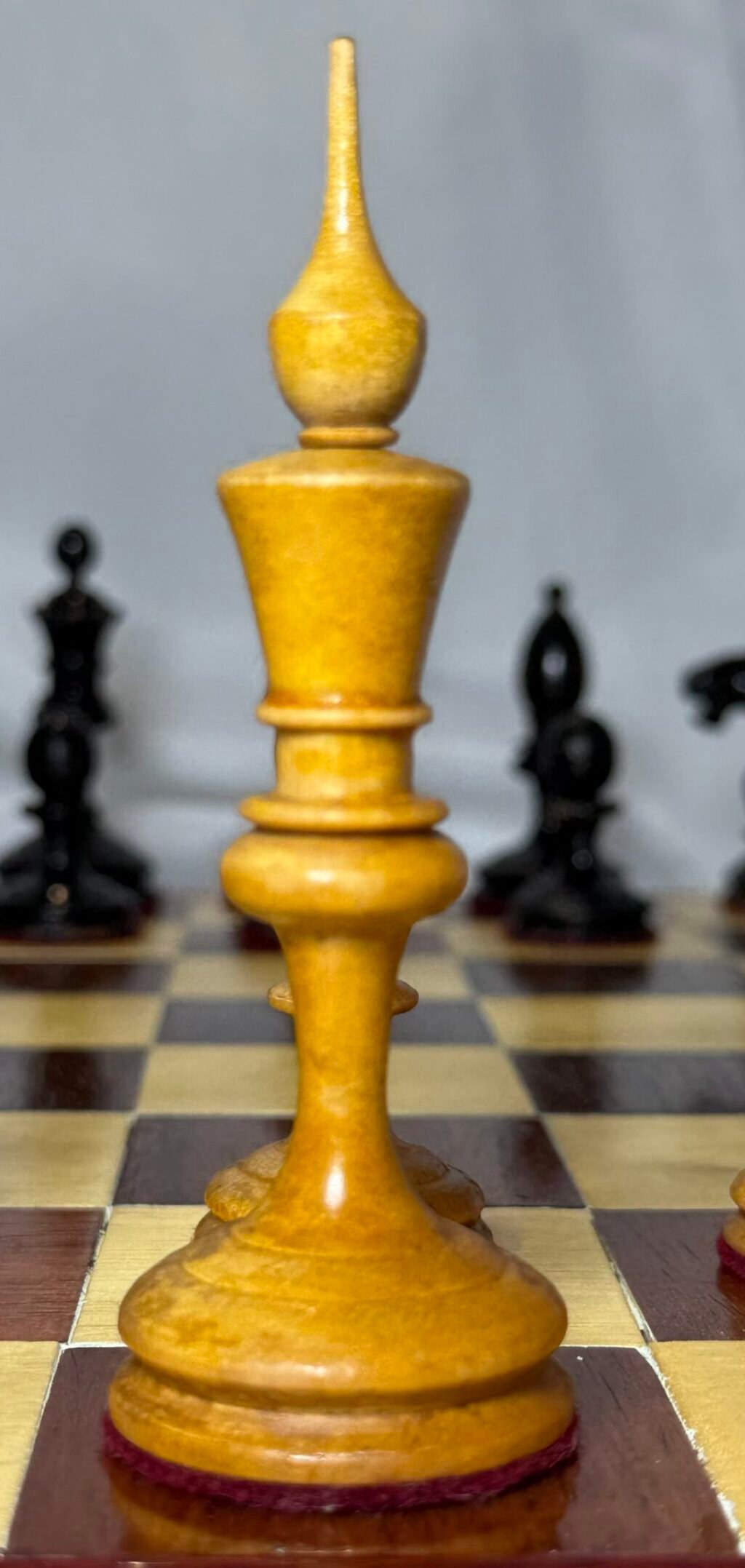





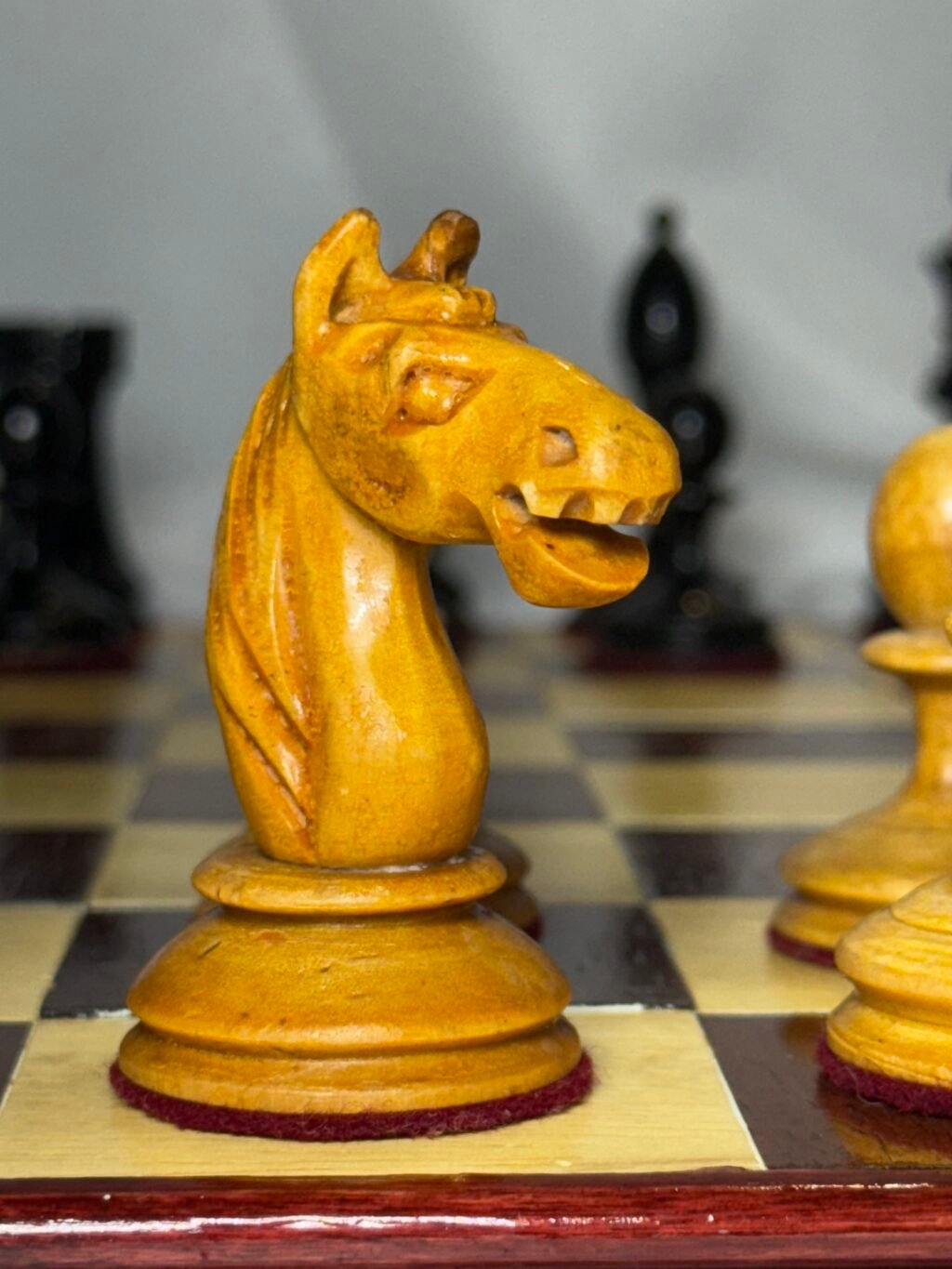

My opinion of this design…
This chess set is one of my absolute favorites, not only for its stunning design but also for the rich historical significance it embodies. Its rarity and the challenge of acquiring a set like this make it an extraordinary treasure in my collection. Owning a set that may belong to the “Moscow International” family is both astonishing and deeply rewarding.
When I seek a vintage design with timeless elegance, this set stands out as the ideal choice. Each piece is perfectly balanced, with proportions and heights that capture a harmonious aesthetic. The craftsmanship exudes a classic charm that reflects the era it represents.
As these vintage sets grow increasingly rare and nearly impossible to find, I feel incredibly fortunate to already have one in my collection. The distinctive design of the knights is a particular highlight for me; their unique character and style set this set apart from most others and make it truly unforgettable.

Here is the set with crosses on the Kings, they are interchangeable and give it more of the Staunton look we are all used too!
